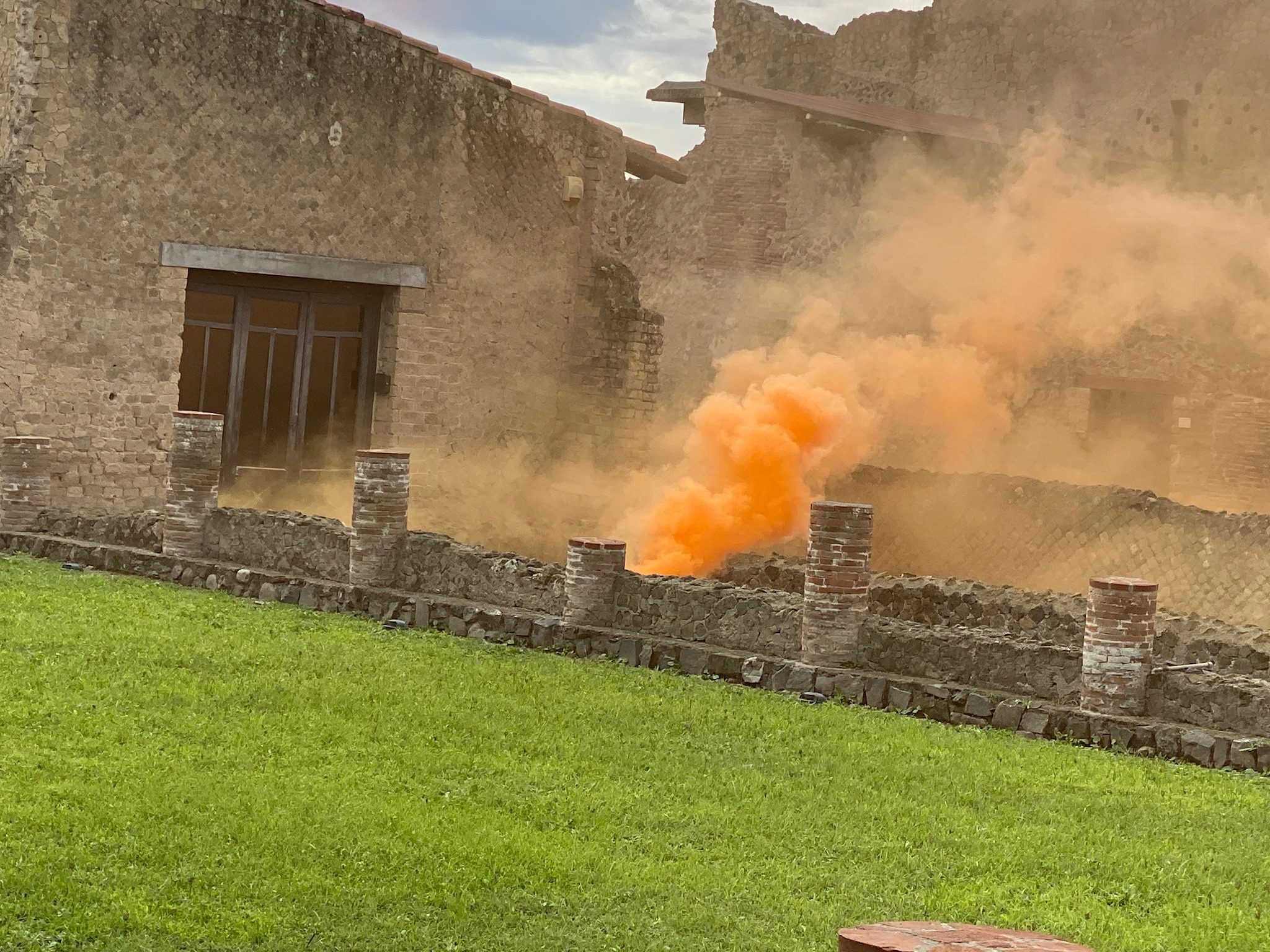
The same eruption of Vesuvius baked Herculaneum in 79 AD. The small community’s buildings came through with many intact buildings and an incredible amount of detail and artifacts. About 12 hours after Pompeii, Herculaneum got inundated under 60 feet of superheated ash. It hardened into “tuff” that preserved the city until the excavations began in 1748. The current city of Ercolano, where we stayed, is just above the ruins. The buildings don’t look much different than the ancient remains.

Before we entered the preserved remains of the city, we stopped into the ultra-modern museum where many of the recovered artifacts are stored and on display.
Just a few examples of recovered artifacts describing an incredibly sophisticated society. Glass, bronze, marble sculpture, dinner-ware, cosmetics and medical equipment were all in ready-to-use condition. There was even the frame of a fully recovered boat that somehow survived.




Talk about surviving disasters, when we entered the park we were handed flyers by the Red Cross saying not to be alarmed when the sirens would sound. They were using the place to do a full, realistic disaster drill. After wandering the site for an hour we smelled and saw orange smoke, simulating a fire, bomb, whatever. It was surreal. The quiet site came alive with first responders dashing around us as though we weren’t there, finding the fire and victims – fully made-up actors, screaming and writhing in pain. They dressed their wounds, tried to calm them and produced blankets and stretchers to extricate them. It was quite a sight, especially when the white coated and masked bio-techs came streaming in with their Geiger counters. Got a little extra for our money that day.




The wonderfully preserved exteriors made you feel as though the city might have been deserted just a few years before. The roads were still paved, walls intact, stands left where vendors hawked foods at the counter where they cooked them. We even went down below to see some remains of locals.




The interiors were even more amazing with uncovered wall mosaics, olive pressing equipment, original frescos, and a fully remaining bath house with benches, shelves, pool mosaic, water inlets and curved, variegated ceiling. What a great and surprising morning to start our last day in Ercolano. Pompeii was interesting and huge, but Herculaneum is a must see. It really brings history to life. If you can’t do both, do Herculaneum – and maybe time it with a Red Cross disaster drill.
Personal Pizza
We headed back to the hotel where they were ready for us to use the dough we prepared two days ago to stretch into a pizza crust, top and cook.





Our dough was ready. We threw on the semolina, stretched and pulled, coated the crust with tomato sauce, basil, mozzarella (not me), and olive oil. A little dangerous for novices, the chef paddled our creations into the hot, hot wood-fired oven and deftly moved and turned four at a time for no more than 90 seconds for a crisp, bubbled, slightly charred crust. What a pleasure!
Naples Archeological Museum
After lunch we had a free afternoon. Some of us wanted to take advantage by exploring the Naples Archeological Museum. An enormous structure about 35 minutes from Ercolano in the middle of Naples. Four of us ventured out in a taxi to the local train station where we struggled with the ticket machine (see the first paragraph in this post), but got on the correct train to the correct station and walked the long block right to our destination.









The museum is famous for its collection of recovered work from Pompeii (too bad a lot of it wasn’t left in place, as was the case in Herculaneum), covering an entire floor of the Museum. A full, room-size model of the site welcomes you, with a nice video showing overlays of what it would have looked like before the eruption. There were rooms full of artifacts and sculpture, an area concentrating on the most amazing mosaic work, and framed wall frescoes carefully removed and placed on the walls of the museum.
We had some time to explore other parts of the museum, including the “longest” sundial in the Sundial Hall…literally a camera obscura with a small hole drilled in the wall of the structure. Jeff also found the “secret” room with, basically pornographic art, having been displayed and hidden, back and forth, over eras and ages. Some pretty risqué stuff.
Tired, we left plenty of time to make it back for our 8 pm dinner. However, it wasn’t quite as easy to return as it was to go. Somehow we went down to a different station (who knows). We were told by a well-meaning young woman how to get to the proper track, but the train we boarded went way past the connecting station. We got off and went back to where we thought we should be…on a local train, probably taking us an extra 15 minutes. Finally there, almost no one could help us??? Even asking the engineers of the trains stopping…each one said no, take the next train. This happened three times. Finally a girl with a cell phone app gave us hope in our panic…and she was right. We got back over an hour late, but luckily dinner was just getting started. We didn’t miss a course. We were very hungry too.
Tomorrow we would transfer to our hotel in Sorrento. What a day. See you then.





